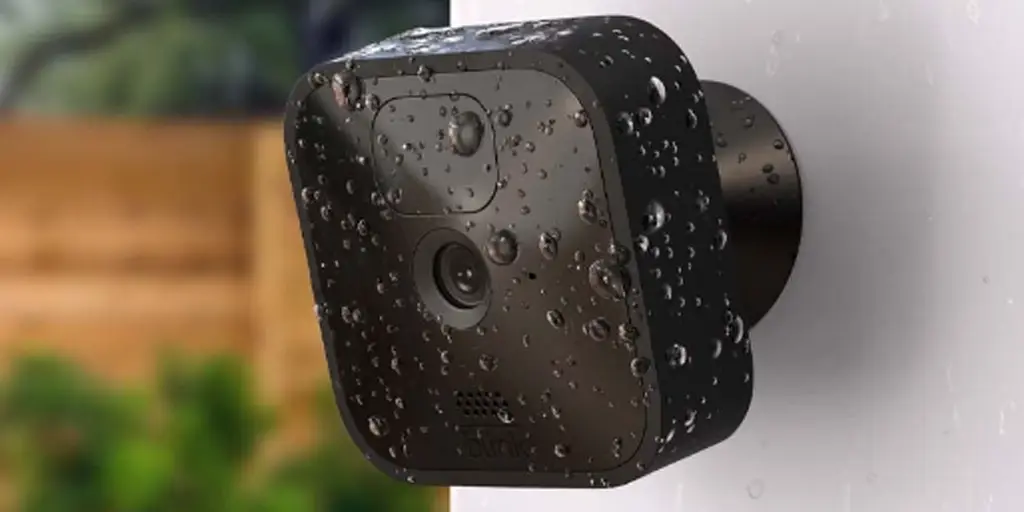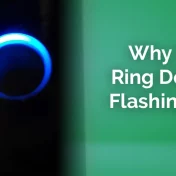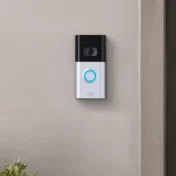In the realm of home security, the choices we make can significantly impact our safety and peace of mind.
One such choice is determining the right mode for your Blink camera: Armed or Disarmed. This decision might seem trivial, but it holds immense importance in ensuring optimal functionality and security.

In this guide, we’ll dive deep into understanding the differences between the two modes, their respective pros and cons, and how to choose the one that aligns best with your needs.
Whether you’re a new Blink camera owner or someone looking to maximize their current setup, this article promises to provide comprehensive insights.
What Is The Difference Between Blink Armed Vs Disarmed?
The distinction between the Armed and Disarmed modes of the Blink camera is crucial. It determines the camera’s behavior in terms of motion detection, video recording, alerts, and more. Here’s a comprehensive breakdown:
Motion Detection
- Armed Mode: The camera actively monitors for any motion. If motion is detected, it triggers the set actions, such as recording or sending alerts.
- Disarmed Mode: Motion detection is turned off, meaning the camera won’t respond even if there’s activity in its field of view.
Video Recording
- Armed Mode: Enables continuous or event-triggered recording, storing the footage either locally or on the cloud.
- Disarmed Mode: No recordings take place. However, users can still access the live view.
Motion Detection Alerts
- Armed Mode: Users receive instant notifications on their connected devices when motion is detected.
- Disarmed Mode: No motion detection alerts are sent out.
Live View
- Armed Mode: Allows users to access the camera’s live feed anytime.
- Disarmed Mode: Live view remains accessible, offering real-time monitoring without any recording.
Battery Life
- Armed Mode: The active functionalities, especially continuous recording, can drain the battery faster.
- Disarmed Mode: With minimal features running, the battery tends to last longer.
Note: The decision to arm or disarm your Blink camera often depends on the specific scenario. For instance, if you’re home and wish to conserve battery life, the disarmed mode makes more sense.
Conversely, when away or during nighttime, the armed mode offers better security.
Pros And Cons Of Blink Armed And Disarmed
Every mode comes with its own set of advantages and disadvantages. Knowing these can help in making an informed choice tailored to your requirements.
Blink Armed Mode
Pros:
- Enhanced Security: With motion detection and video recording active, it offers a more robust security setup.
- Instant Alerts: Keeps the user informed about any suspicious activities in real-time.
- Evidence Collection: The recorded footage can serve as evidence in case of any security breach or incident.
Cons:
- Reduced Battery Life: Continuous monitoring can lead to quicker battery drainage.
- Potential for False Alarms: Might pick up non-essential movements like pets or passing cars, leading to unnecessary alerts.
Blink Disarmed Mode
Pros:
- Battery Conservation: With fewer features active, the battery lasts considerably longer.
- Avoidance of Unneeded Alerts: No false alarms from daily household activities or benign movements.
- Privacy: Ensures that no recordings are made, offering more privacy when you’re home.
Cons:
- Missed Events: There’s a risk of missing out on crucial events as the camera doesn’t record or alert.
- Reliance on Manual Monitoring: Users need to manually check the live view for any activities.
It’s evident that the choice between Armed and Disarmed modes is not black and white. It’s essential to weigh the pros and cons based on individual preferences, household activity, and the level of security desired.
Consider using scheduled arming, which allows your camera to automatically switch between modes based on the time of day or your routines. This way, you can enjoy the best of both worlds without manual intervention.
How To Arm a Blink Camera?
Arming your Blink camera is a straightforward process, but for those unfamiliar, it can seem daunting. Here’s a step-by-step guide to help you navigate through it:
Step 1: Access the Blink App
Before anything else, ensure you have the Blink Home Monitor app installed on your smartphone or tablet. Once installed, open the app and sign in using your credentials.
Step 2: Navigate to the Home Screen
Upon logging in, you’ll be directed to the home screen which displays a list of all your Blink camera systems. Each system corresponds to a location, e.g., “Home,” “Office,” or “Vacation House.”
Step 3: Select the Camera System
Tap on the desired camera system for which you want to change the mode. This will open a new screen showcasing all the cameras linked to that system.
Step 4: Arming the Camera
At the bottom of the screen, you’ll find the Armed and Disarmed buttons. Simply tap on the Armed button. The app might prompt a confirmation; if so, confirm your choice.
Step 5: Customizing the Settings (Optional)
If you wish to adjust the specifics of the armed mode, such as motion sensitivity or clip length, tap on the gear icon next to the camera name. This will lead you to the settings page where you can make your desired changes.
Remember, arming one camera system doesn’t automatically arm the others. If you have multiple systems or locations, you need to arm each one individually.
Should Blink Cameras Be Armed or Disarmed?
Choosing whether to arm or disarm your Blink cameras is a decision influenced by various factors. Here, we’ll outline common scenarios and provide recommendations for each.
Armed Mode
When You’re Away:
- If you’re stepping out, whether for a short errand or a long vacation, it’s wise to arm the cameras. This ensures you’re alerted to any motion or unexpected activity in your absence.
During the Night:
- Even if you’re home, arming the cameras at night can provide an added layer of security. This can be especially useful in areas where break-ins or nocturnal animal activity is common.
When Expecting Deliveries:
- If you’re awaiting a package delivery, arming the camera can notify you of the delivery person’s arrival, allowing you to communicate or instruct them remotely if needed.
Disarmed Mode
While at Home During Daytime:
- If you’re home and active, disarming the camera can save battery life and avoid unnecessary motion alerts from regular household activities.
Hosting an Event or Gathering:
- If you’re having guests over, it might be a good idea to disarm the cameras, ensuring privacy for your guests and reducing the number of motion-triggered recordings.
Routine Activities:
- For daily activities, like kids playing in the yard or gardening, disarming the camera can prevent constant notifications and save battery.
Pro Tip: Instead of manually switching between modes, consider leveraging the scheduling feature available in the Blink app.
By setting up schedules, your camera can automatically arm or disarm based on the day and time, making the process seamless and efficient.
Making an informed choice between arming or disarming your Blink camera is crucial for both security and convenience.
Regularly review your routines and adjust the camera settings accordingly to achieve a balance between vigilance and battery conservation.
Read Also: How Big Is A 32-Inch TV? What You Need to Know
Conclusion
The Blink Armed vs. Disarmed debate isn’t just about turning on or off a feature; it’s about optimizing safety, ensuring privacy, and efficiently using the camera’s battery life.
As we’ve seen, both modes have their respective advantages and scenarios where they shine. The choice is not about selecting one over the other permanently but adapting based on circumstances.
In essence:
- Armed mode is your go-to for heightened security, especially during periods of absence or vulnerability.
- Disarmed mode, on the other hand, offers a breather, ensuring you’re not overwhelmed with notifications and preserving the camera’s longevity.
To truly harness the potential of your Blink camera, it’s essential to be dynamic, adjusting modes as situations demand. And with technological advancements, features like scheduling make this task even more effortless.
Remember, the end goal is to create a safe and secure environment. Whether armed or disarmed, your Blink camera serves as a vigilant eye, ensuring peace of mind.



